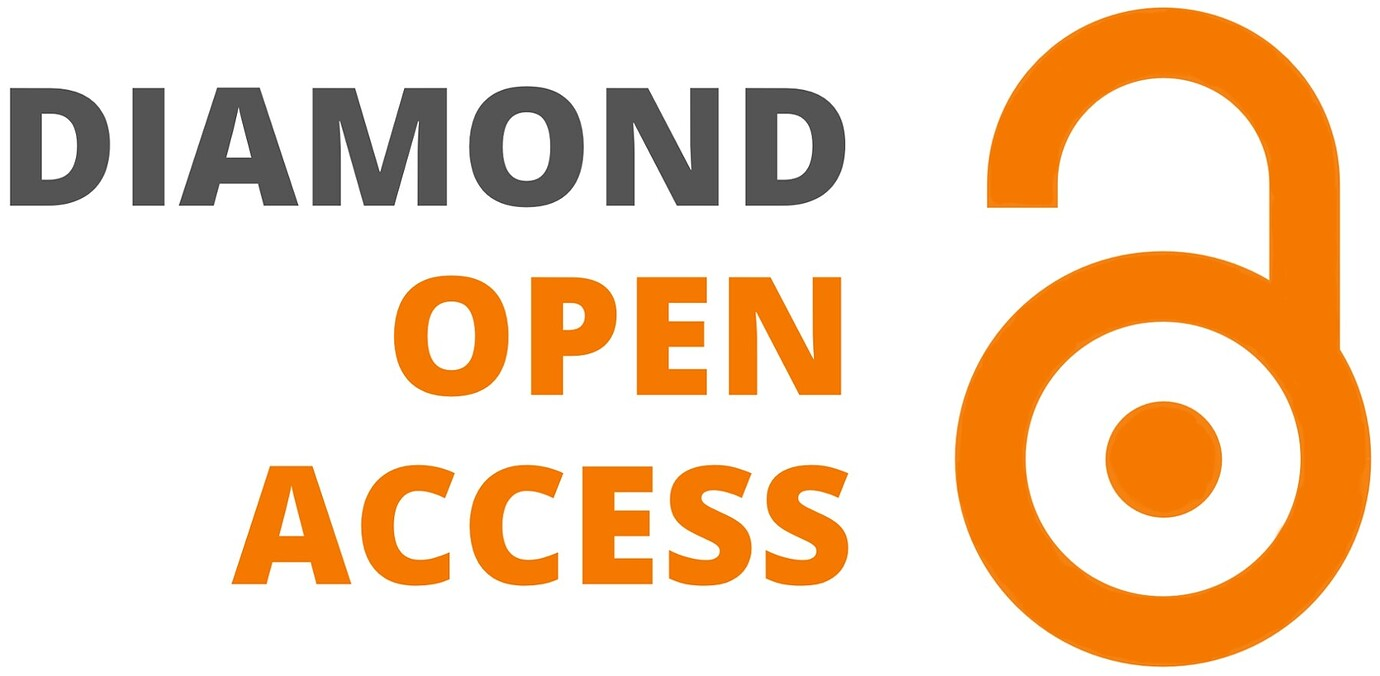Method for the analysis of pauses for assessing subtle cognitive impairment applied to Cancer-Related Cognitive Impairment.
DOI:
https://doi.org/10.61989/qp2vb532Keywords:
Mild NeuroCognitive Disorders, Cancer-Related Cognitive Impairment, pauses, automatic transcription, speech, prosodyAbstract
Background. Speech analysis can detect subtle cognitive impairment, particularly because prosody contains fine elements, such as pauses, which might be behavioral markers of NeuroCognitive Disorders. However, the absence of simple, detailed methods compromises the feasibility of such an analysis in clinics. Mild Neurocognitive Disorders (mNCD) refer to a cognitive change reported by an individual whose autonomy is preserved. This terminology covers many underlying pathophysiologies, such as Cancer-Related Cognitive Impairment (CRCI). CRCI is an mNCD characterized by a memory complaint (e.g., "I forget what I’m told") and a language complaint (e.g., "I search for my words") for which the frequency and intensity exceed the scores of speech-language tests or neuropsychological tests. The lack of sensitive tools to detect this subtle impairment often leads to its underdiagnosis. New methods such as speech analysis are needed to assess CRCI.
Objectives. The study aims are (i) to propose a method for analyzing pauses which is practical in clinical context, (ii) to identify participants with CRCI using this method.
Methods. Thirteen participants post breast cancer and thirteen healthy controls were included in the study. The participants were instructed to tell a picture-based story. Their narratives were recorded, then automatically transcribed with Whisper and analyzed using SPPAS and Praat software. Silent pauses, filled pauses (e.g., "uh"), and sustained vowels (e.g., "a smaall boy") were annotated, then examined on JASP for a statistical analysis.
Results. The duration of silent pauses in post-cancer participants was significantly longer than that of the controls. However, the duration of filled pauses and sustained vowels did not show a significant difference between the two groups. Similarly, the rate of pauses (i.e., number of occurrences/total speech duration) did not show a significant difference between the two groups.
Conclusions. This study provides a well-described method for pause analysis designed for the purpose of clinical context. The results suggest that the duration of silent pauses is a good marker for differentiating post-cancer participants from controls.
References
Amani, O., Mazaheri, M. A., Moghani, M. M., Zarani, F., & Choolabi, R. H. (2024). Chemotherapy-induced cognitive impairment in breast cancer survivors: A systematic review of studies from 2000 to 2021. Cancer Reports, 7(2), e1989. https://doi.org/10.1002/cnr2.1989
American Psychiatric Association. (2022). Diagnostic and Statistical Manual of Mental Disorders (DSM-5-TR). https://doi.org/10.1176/appi.books.9780890425787
Angelopoulou, G., Kasselimis, D., Goutsos, D., & Potagas, C. (2024). A methodological approach to quantifying silent pauses, speech rate, and articulation rate across distinct narrative tasks: Introducing the Connected Speech Analysis Protocol (CSAP). Brain Sciences, 14(5), 466. https://doi.org/10.3390/brainsci14050466
Audacity Team (1999). Audacity (version 3.0) [logiciel informatique]. https://www.audacityteam.org/
Bézy, C., Renard, A., & Pariente, J. (dir.) (2016). GRÉMOTS : batterie d’évaluation des troubles du langage dans les maladies neurodégénératives du GRECO. De Boeck Supérieur.
Bigi, B. (2015). SPPAS - Multi-lingual approaches to the automatic annotation of speech. The Phonetician. Journal of the International Society of Phonetic Sciences, 111–112, 54–69. https://hal.science/hal-01417876
Boersma, P., & Weenink, D. (2024). Praat: Doing phonetics by computer (Version 6.1.55) [logiciel informatique]. https://www.fon.hum.uva.nl/praat/
Bóna, J. (2024). Pausing and fluency in speech of patients with relapsing-remitting multiple sclerosis. Clinical Linguistics & Phonetics, 38(4), 332–344. https://doi.org/10.1080/02699206.2023.2223347
Bonomi, A. E., Cella, D. F., Hahn, E. A., Bjordal, K., Sperner-Unterweger, B., Gangeri, L., Bergman, B., Willems-Groot, J., Hanquet, P., & Zittoun, R. (1996). Multilingual translation of the Functional Assessment of Cancer Therapy (FACT) quality of life measurement system. Quality of Life Research, 5(3), 309–320. https://doi.org/10.1007/BF00433915
Bryant, L., Spencer, E., & Ferguson, A. (2017). Clinical use of linguistic discourse analysis for the assessment of language in aphasia. Aphasiology, 31(10), 1105–1126. https://doi.org/10.1080/02687038.2016.1239013
Campione, E., & Véronis, J. (2002). A large-scale multilingual study of silent pause duration. Speech Prosody 2002, 11-13 avril. Aix-En-Provence. https://doi.org/10.21437/SpeechProsody.2002-35
Candea, M. (2000). Contribution à l’étude des pauses silencieuses et des phénomènes dits “d’hésitation” en français oral spontané. Etude sur un corpus de récits en classe de français. [thèse de doctorat, Université de la Sorbonne nouvelle - Paris III]. HAL. https://theses.hal.science/tel-00290143v1
Cella, D. F., Tulsky, D. S., Gray, G., Sarafian, B., Linn, E., Bonomi, A., Silberman, M., Yellen, S. B., Winicour, P., & Brannon, J. (1993). The Functional Assessment of Cancer Therapy scale: Development and validation of the general measure. Journal of Clinical Oncology, 11(3), 570–579. https://doi.org/10.1200/JCO.1993.11.3.570
Commission Nationale de l’Informatique et des Libertés - CNIL. (2016). Le règlement général sur la protection des données—RGPD. https://www.cnil.fr/fr/reglement-europeen-protection-donnees
Costa, D. S. J., Loh, V., Birney, D. P., Dhillon, H. M., Fardell, J. E., Gessler, D., & Vardy, J. L. (2018). The Structure of the FACT-Cog v3 in cancer patients, students, and older adults. Journal of Pain and Symptom Management, 55(4), 1173–1178. https://doi.org/10.1016/j.jpainsymman.2017.12.486
DiCanio, C. (2011). Text replacement script for Praat [logiciel informatique]. https://www.acsu.buffalo.edu/~cdicanio/scripts.html
Duez, D. (2001). Caractéristiques acoustiques et phonétiques des pauses remplies dans la conversation en français. Travaux Interdisciplinaires du Laboratoire Parole et Langage (TIPA), 20, 31-48. https://hal.science/hal-00285404v1
Folstein, M. F., Folstein, S. E., & McHugh, P. R. (1975). “Mini-mental state”. A practical method for grading the cognitive state of patients for the clinician. Journal of Psychiatric Research, 12(3), 189–198. https://doi.org/10.1016/0022-3956(75)90026-6
Goldman, J.-P., Thomas, F., Roekhaut, S., & Simon, A.-C. (2010). Étude statistique de la durée pausale dans différents styles de parole. Actes des 28e Journées d’Étude sur la Parole (JEP), 161–164. http:// hdl.handle.net/2078.1/81909
Groupe de travail Traumatisme Crânio-Cérébral Léger (TCCL) en Île-de-France (2021). Rapport du groupe de travail TCCL. Agence Régionale de Santé Île-de-France. https://www.iledefrance.ars.sante.fr/traumatisme-cranio-cerebral-leger-tccl-en-ile-de-france-rapport-du-groupe-de-travail
Haute Autorité de Santé. (2018). Patients présentant un trouble neurocognitif associé à la maladie d’Alzheimer ou à une maladie apparentée. Guide parcours de soins. https://www.has-sante.fr/jcms/c_2906096/en/patients-presentant-un-trouble-neurocognitif-associe-a-la-maladie-d-alzheimer-ou-a-une-maladie-apparentee
He, R., Chapin, K., Al-Tamimi, J., Bel, N., Marquié, M., Rosende-Roca, M., Pytel, V., Tartari, J. P., Alegret, M., Sanabria, A., Ruiz, A., Boada, M., Valero, S., & Hinzen, W. (2023). Automated classification of cognitive decline and probable Alzheimer’s dementia across multiple speech and language domains. American Journal of Speech-Language Pathology, 32(5), 2075–2086. https://doi.org/10.1044/2023_AJSLP-22-00403
Hommel, M., Miguel, S. T., Naegele, B., Gonnet, N., & Jaillard, A. (2009). Cognitive determinants of social functioning after a first ever mild to moderate stroke at vocational age. Journal of Neurology, Neurosurgery & Psychiatry, 80(8), 876–880. https://doi.org/10.1136/jnnp.2008.169672
Ivanova, O., Martínez-Nicolás, I., & Meilán, J. J. G. (2023). Speech changes in old age: Methodological considerations for speech-based discrimination of healthy ageing and Alzheimer’s disease. International Journal of Language & Communication Disorders, 59(1), 13–37. https://doi.org/10.1111/1460-6984.12888
Janelsins, M. C., Kohli, S., Mohile, S. G., Usuki, K., Ahles, T. A., & Morrow, G. R. (2011). An update on cancer- and chemotherapy-related cognitive dysfunction: Current status. Seminars in Oncology, 38(3), 431–438. https://doi.org/doi:10.1053/j.seminoncol.2011.03.014
JASP Team. (2023). JASP (version 0.17.3) [logiciel informatique]. https://jasp-stats.org/team/
Jim, H. S. L., Phillips, K. M., Chait, S., Faul, L. A., Popa, M. A., Lee, Y.-H., Hussin, M. G., Jacobsen, P. B., & Small, B. J. (2012). Meta-analysis of cognitive functioning in breast cancer survivors previously treated with standard-dose chemotherapy. Journal of Clinical Oncology, 30(29), 3578–3587. https://doi.org/10.1200/JCO.2011.39.5640
Joly, F., Lange, M., Rigal, O., Correia, H., Giffard, B., Beaumont, J. L., Clisant, S., & Wagner, L. (2012). French version of the Functional Assessment of Cancer Therapy–Cognitive function (FACT-Cog) version 3. Supportive Care in Cancer, 20, 3297–3305. https://doi.org/10.1007/s00520-012-1439-2
Kassambara, A. (2016). ggpubr: “ggplot2” Based publication ready plots (version 0.6.0) [fichier de données]. https://doi.org/10.32614/CRAN.package.ggpubr
Lanzi, A. M., Saylor, A. K., Fromm, D., Liu, H., MacWhinney, B., & Cohen, M. L. (2023). DementiaBank: Theoretical rationale, protocol, and illustrative analyses. American Journal of Speech-Language Pathology, 32(2), 426–438. https://doi.org/10.1044/2022_AJSLP-22-00281
Mann, H. B., & Whitney, D. R. (1947). On a test of whether one of two random variables is stochastically larger than the other. Annals of Mathematical Statistics, 18(1), 50–60. https://doi.org/10.1214/aoms/1177730491
Nasreddine, Z. S., Phillips, N. A., Bédirian, V., Charbonneau, S., Whitehead, V., Collin, I., Cummings, J. L., & Chertkow, H. (2005). The Montreal Cognitive Assessment, MoCA: A brief screening tool for mild cognitive impairment. Journal of the American Geriatrics Society, 53(4), 695–699. https://doi.org/10.1111/j.1532-5415.2005.53221.x
OSF (2011). Plateforme open source de soutien à la recherche. Center for Open Science. https://osf.io/sqwnz/?view_only=8947f20e707f476c9cf44a35ca9d7c32
Parjane, N., Cho, S., Ash, S., Cousins, K. A. Q., Shellikeri, S., Liberman, M., Shaw, L. M., Irwin, D. J., Grossman, M., & Nevler, N. (2021). Digital speech analysis in progressive supranuclear palsy and corticobasal syndromes. Journal of Alzheimer’s Disease, 82(1), 33–45. Embase. https://doi.org/10.3233/jad-201132
Radford, A., Kim, J. W., Xu, T., Brockman, G., McLeavey, C., & Sutskever, I. (2022). Robust speech recognition via large-scale weak supervision. arXiv: 2212.04356[eess.AS]. https://doi.org/10.48550/ARXIV.2212.04356
Richard, A. B., Reilly, K. T., & Jacquin-Courtois, S. (2022, 17 juin). Que révèlent les disfluences sur le manque du mot rapporté par les patientes ayant un cancer du sein. Actes des 34e Journées d’Etudes sur la Parole (JEP), 357-365. https://doi.org/10.21437/JEP.2022-38
Richard, A. B., Hirsch, F., Jacquin-Courtois, S., & Reilly, K. T. (2023). Self-interruptions in breast cancer patients who complain of anomia. Dans R. Skarnitzl & J. Volín (dir.), Proceedings of the 20th International Congress of Phonetic Sciences (p. 4012–4016). https://hal.science/hal-04195993v1
Richard, A. B., Foncelle, A., Hirsch, F., Jacquin-Courtois, S., Reilly, K., & Lelandais, M. (2024). Speech markers of Cancer-Related Cognitive Impairment: A pilot study. Speech Prosody 2024, 2-5 juillet. Leiden. https://doi.org/10.31219/osf.io/xz46h
RStudio, BPC. (2020). RStudio: Integrated development for R [logiciel informatique]. https://support.posit.co/hc/en-us/articles/206212048-Citing-RStudio
Spearman, C. (1904). The proof and measurement of association between two things. The American Journal of Psychology, 15(1), 72-101. https://doi.org/10.2307/1412159
Themistocleous, C., Eckerström, M., & Kokkinakis, D. (2020). Voice quality and speech fluency distinguish individuals with Mild Cognitive Impairment from healthy controls. PLOS ONE, 15(7), e0236009. https://doi.org/10.1371/journal.pone.0236009
Van Dyk, K., Crespi, C. M., Petersen, L., & Ganz, P. A. (2020). Identifying Cancer-Related Cognitive Impairment using the FACT-Cog perceived cognitive impairment. JNCI Cancer Spectrum, 4(1), pkz099. https://doi.org/10.1093/jncics/pkz099
Vincze, V., Szatlóczki, G., Tóth, L., Gosztolya, G., Pákáski, M., Hoffmann, I., & Kálmán, J. (2021). Telltale silence: Temporal speech parameters discriminate between prodromal dementia and mild Alzheimer’s disease. Clinical Linguistics & Phonetics, 35(8), 727–742. https://doi.org/10.1080/02699206.2020.1827043
Wagner, L. I., Sweet, J., Butt, Z., Lai, J. S., & Cella, D. (2009). Measuring patient self-reported cognitive function: Development of the Functional Assessment of Cancer Therapy–cognitive function instrument. The Journal of Supportive Oncology, 7(6), W32–W39.
Wickham, H., Chang, W., Henry, L., Pedersen, T. L., Takahashi, K., Wilke, C., Woo, K., Yutani, H., Dunnington, D., & van den Brand, T. (2016). ggplot2: Create elegant data visusalisations using the grammar of graphics. https://ggplot2.tidyverse.org
Zigmond, A. S., & Snaith, R. P. (1983). The Hospital Anxiety and Depression scale. Acta Psychiatrica Scandinavica, 67(6), 361–370. https://doi.org/10.1111/j.1600-0447.1983.tb09716.x
Downloads
Published
License
Copyright (c) 2024 Amélie B. Richard, Fabrice Hirsch, Sophie Jacquin-Courtois

This work is licensed under a Creative Commons Attribution 4.0 International License.




